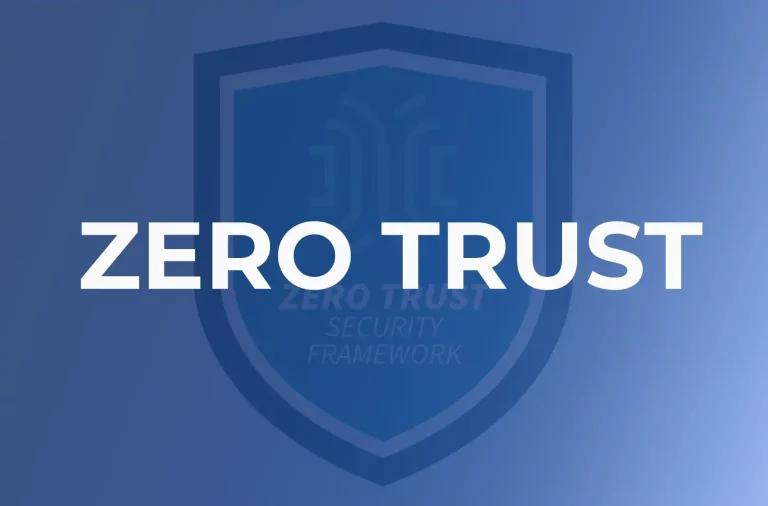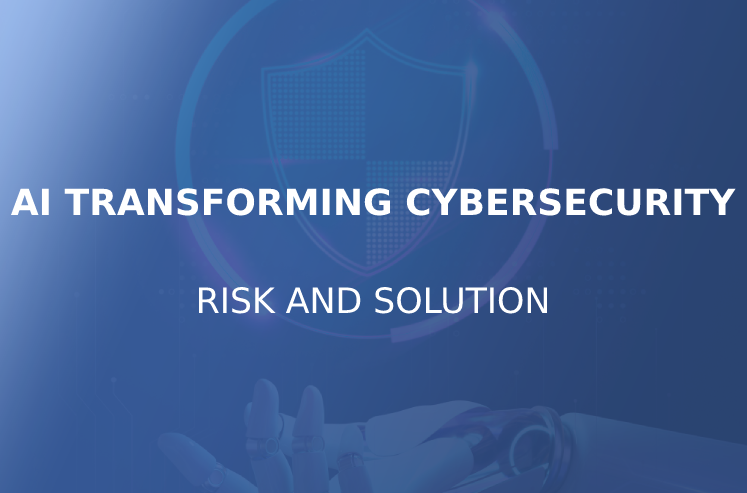In an era defined by digitization and interconnectedness, the importance of cybersecurity for businesses cannot be overstated. Today’s digital landscape is a double-edged sword, offering unprecedented opportunities for growth and innovation while simultaneously exposing organizations to a multitude of cyber threats. As we navigate this dynamic terrain, understanding the significance of cybersecurity is not merely a choice but an imperative.
The Current State of Cybersecurity
The worrying increase in the number and sophistication of cyberattacks emphasizes how urgent cybersecurity is. The cyber criminals of today are not only more active but also quite clever. Think over the statistics below:
Frequency: Cyber incidents have surged year after year. In 2021, the United States reported over 1,200 data breaches, exposing 750+ million records.
Sophistication: Cybercriminals employ advanced tactics, including targeted phishing and sophisticated malware, to breach well-defended systems.
These numbers paint a clear picture: the threat landscape is dynamic and relentless. As businesses rely more on digital infrastructure, the risk of cyberattacks remains ever-present.
Cybersecurity breaches come at a steep price, both financially and reputationally. It’s essential to understand the real-world impact of these breaches, as they can have far-reaching consequences for businesses of all sizes. Here’s a glimpse into the costs involved:
Financial Costs: The direct financial toll of a cybersecurity breach includes incident response, system remediation, legal fees, and potential regulatory fines. According to IBM’s 2021 Cost of a Data Breach Report, the average total cost of a data breach was $4.24 million.
Reputational Costs: Beyond the immediate financial implications, a cybersecurity breach can damage a company’s reputation and erode customer trust. Companies often struggle to regain trust after a breach, leading to long-term revenue losses.
One significant instance is the 2017 Equifax data breach, which compromised the personal information of around 147 million people. Along with considerable financial losses, Equifax also experienced major reputational harm, which diminished customer trust.
Target, a major retailer, had a significant data breach in 2013, which exposed the personal information of 70 million additional people throughout the holiday season, as well as the credit and debit card information of 40 million customers. Due to court settlements and security upgrades, there was a severe financial impact that exceeded $200 million. Customer trust decreased, and Target’s brand was damaged. This incident emphasizes the real costs of weak cybersecurity and highlights how vital it is for companies to implement strong security measures in the digital age.
The Target Data Breach
One of the biggest retailers in the United States, Target, experienced a cybersecurity problem in November 2013 during the hectic Christmas shopping season. This incident would go on to serve as a cautionary tale. Millions of shoppers raced to Target’s shops and website to make their seasonal purchases, blissfully ignorant that a massive breach of personal and financial information was about to occur.
The point-of-sale (PoS) systems at Target, which handle credit and debit card transactions, were the target of a cyberattack that caused the breach. These systems were successfully penetrated by hackers, giving them unrestricted access to Target’s network and allowing them to steal private consumer information.
The devastation was astonishing in its scope. Approximately 40 million credit and debit card details were stolen, and personal data, including names, addresses, phone numbers, and email addresses, belonging to an additional 70 million consumers was also compromised. Customers of Target were gravely at danger of identity theft and fraudulent charges as a result of this incident, which caused considerable outrage and concern.
The Target data breach imparts several crucial lessons in cybersecurity:
No Company is Too Big to Fail: The breach demonstrated that Target’s size and prominence did not shield it from a determined cyberattack. Any organization, regardless of its stature, can be vulnerable.
The Importance of Continuous Monitoring: Regularly assessing and monitoring network security is essential. Detecting breaches early can help mitigate damage.
Customer Trust is Fragile: Trust is challenging to establish but easy to erode. A cybersecurity incident can shatter customer confidence in an instant.
Invest in Cybersecurity: Companies must invest in robust cybersecurity measures and stay abreast of the latest threats and best practices.
Transparency and Communication: How a company responds to a breach is pivotal. Open and honest communication with affected parties is crucial for rebuilding trust.
The Target data breach remains a pivotal moment in cybersecurity history, underscoring the importance of vigilance, preparedness, and an unwavering commitment to safeguarding customer data. It serves as a stark reminder that the consequences of a breach extend far beyond immediate financial losses, impacting a company’s reputation and customer trust for years to come.
Cybersecurity Threats
Threats to cybersecurity are numerous and sneaky. Phishing, for instance, deceives victims into divulging sensitive information by disguising dangerous emails as legitimate letters. Virens, spyware, and trojans that penetrate systems to steal data or obstruct operations are included in the broader category of malware. Files are encrypted by ransomware, which then demands payment to decrypt them.
The stakes are emphasized by real-world instances. A significant data breach at Equifax exposed the personal information of around 147 million customers. After a breach impacting 57 million customers was revealed, Uber was embroiled in a crisis over its cover-up. In addition to financial damages, these incidents also damaged trust and reputation.
Cyber threats are dynamic, evolving into more sophisticated forms. Cybercriminals adapt tactics, requiring businesses to proactively defend themselves. To navigate this digital minefield effectively, companies must remain vigilant, educate employees, and invest in advanced cybersecurity solutions. Recognizing the ever-changing nature of cyber threats is essential for safeguarding digital assets and securing the future.
The Human Element in Cybersecurity
Human error ranks among the top causes of cybersecurity breaches. Employees, often the first line of defense, can unintentionally compromise security through innocent actions. To mitigate this risk, organizations must invest in comprehensive employee training and awareness programs.
These programs educate staff about common cyber threats like phishing, social engineering, and malware. They empower employees to recognize and respond to suspicious activities, equipping them to safeguard sensitive data.
While most employees have good intentions, insider threats exist. Whether due to disgruntlement, ignorance, or carelessness, employees can pose significant risks. Organizations must strike a balance between trust and security by implementing access controls, monitoring systems, and policies that deter malicious activities while respecting privacy.
The 2017 Equifax data leak is a sobering illustration of what can happen when people make mistakes. In this case study, we look at how one worker’s neglect to deploy a crucial software patch resulted in one of the worst data breaches in recorded history. It emphasizes the significance of rigorous cybersecurity training and the requirement for reliable procedures to stop minor errors from having disastrous results.
Building a Strong Cybersecurity Culture
Leadership sets the cybersecurity tone. Commitment from top executives and managers is crucial for a cybersecurity-first mindset. This involves resource allocation, security objectives, and policy compliance. Engaging all employees through training and awareness fosters a security-conscious culture, enhancing protection against threats. A well-defined cybersecurity policy and incident response plan are vital, outlining roles, escalation procedures, and communication protocols. When leadership prioritizes cybersecurity, engages employees, and implements strong policies, it forms a resilient security culture, fortifying against evolving threats.
Why Investing in Cybersecurity?
In today’s digitally driven landscape, cybersecurity investment is no longer a choice but a business necessity. To highlight its importance, consider the real-world impact of the NotPetya cyberattack in 2017.
The Example: NotPetya’s Toll on Maersk
In 2017, NotPetya struck globally, affecting organizations like Maersk, the world’s largest container shipping company.
Financial Impact: Maersk estimated NotPetya’s cost at over $300 million, impacting its operations and bottom line.
Operational Disruption: Maersk’s systems were paralyzed, causing substantial operational delays and customer supply chain disruptions.
Reputation Damage: The cyberattack eroded customer trust and raised questions about data security.
The Maersk case underscores that no organization is immune to cyber threats. Inadequate cybersecurity can lead to catastrophic financial, operational, and reputational consequences.Investing in cybersecurity is essential to mitigate these risks and protect a company’s reputation, customer trust, and financial stability. It’s a proactive step vital for businesses in the digital age, safeguarding against an ever-evolving threat landscape.
Key Data Protection Regulations and Their Consequences
GDPR (General Data Protection Regulation): Enforced by the EU, GDPR mandates strict data protection rules. It requires transparency, consent, and data breach reporting, imposing hefty fines for non-compliance.
HIPAA (Health Insurance Portability and Accountability Act): Focuses on healthcare data security. Healthcare organizations must implement rigorous security measures, breach protocols, and employee training to comply.
CCPA (California Consumer Privacy Act): Grants Californians extensive data rights. Businesses handling their data must meet specific requirements, including data access and deletion requests.
Non-compliance can be financially and reputationally devastating. GDPR fines can reach €20 million or 4% of global revenue. HIPAA violations range from $100 to $50,000 per violation, maxing at $1.5 million annually. CCPA violations can lead to $7,500 penalties per intentional breach.
Proactive Measures for Cybersecurity
Access controls and strong authentication are your first line of defense in cybersecurity. Limiting access to authorized personnel and using multi-factor authentication adds extra security layers.
Regularly updating and patching software is vital to prevent cyberattacks targeting vulnerabilities. Don’t leave your systems exposed to preventable attacks. A well-defined incident response plan is crucial for swift and effective action during a cyberattack. Regular testing ensures preparedness. Learning from successful cyberattack defenses is motivating. Real-life success stories show that with the right approach, organizations can emerge stronger.
Key Takeaways
In today’s digital world, cybersecurity is a must for businesses, big and small. It safeguards sensitive data, upholds customer trust, and secures your bottom line.
As cyber threats evolve, acting promptly is vital. Don’t delay in strengthening your defenses. Invest in robust cybersecurity now to reduce risks and ensure uninterrupted business. Cybersecurity is dynamic, with new threats emerging constantly. Stay vigilant, educate your team, and adapt to the evolving landscape. Remember, it’s an ongoing journey.
ITAdOn offers top-notch cybersecurity solutions for your business. Contact us for a free consultation with our experts and fortify your digital future.






